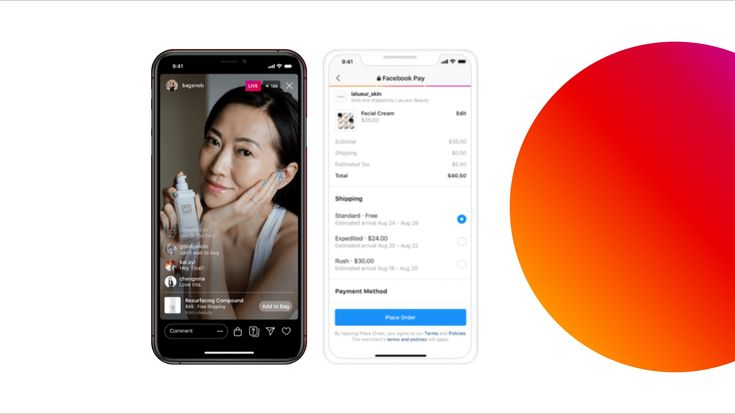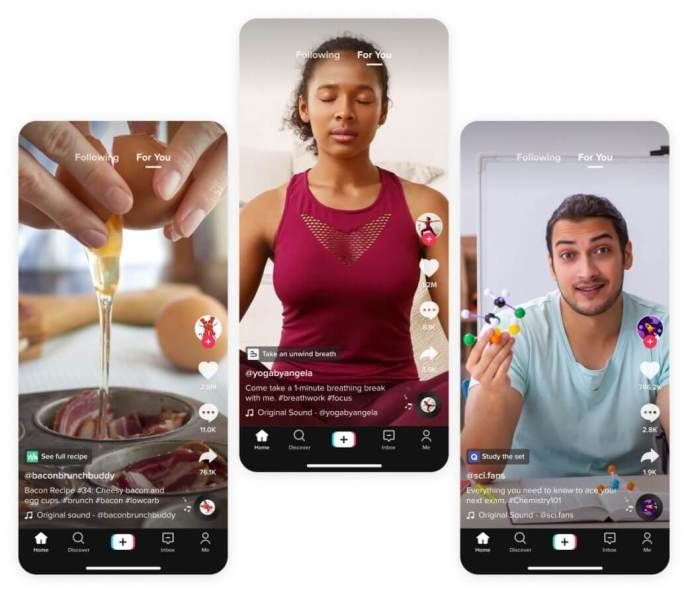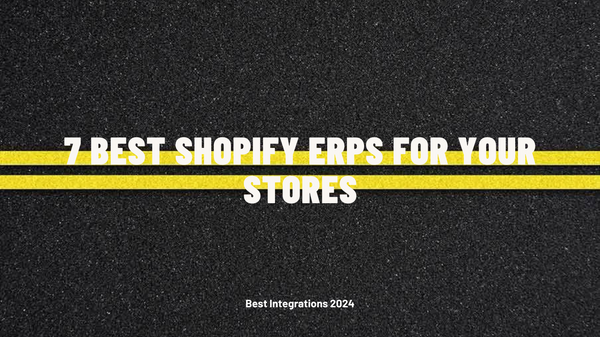As an ecommerce business owner, I've always been intrigued by the power of social media and its potential to boost sales. Social commerce, the integration of social media and ecommerce, has emerged as a game-changer in the industry. It allows businesses to reach and engage with their target audience on platforms they already use and love. In this article, I will delve into the world of social commerce, exploring its importance for ecommerce businesses, the benefits it offers, and how you can leverage it to drive your business forward.
Why Social Commerce is Important for Ecommerce Businesses
Social commerce has become a key component of any successful ecommerce strategy. With billions of people using social media platforms daily, it has become a virtual marketplace where businesses can showcase their products and connect with potential customers. By tapping into the power of social commerce, you can expand your reach, boost brand awareness, and ultimately increase sales.
One of the primary reasons why social commerce is important is the ability to leverage user-generated content. Customers are more likely to trust recommendations and reviews from their peers than traditional advertising. By encouraging customers to share their experiences with your products on social media, you can harness the power of word-of-mouth marketing and build trust with potential customers.

Benefits of Social Commerce
The benefits of social commerce extend beyond increased sales. Here are some key advantages that make it a must-have for any ecommerce business:
- Enhanced Customer Engagement: Social media platforms provide a two-way communication channel between businesses and customers. By actively engaging with your audience through comments, direct messages, and live chats, you can build strong relationships, gain valuable insights, and provide personalized customer service.
- Increased Brand Awareness: Social media platforms have a vast and diverse user base, allowing you to reach a larger audience than traditional marketing channels. With the right social commerce strategies, you can create viral content that spreads across platforms, increasing your brand's visibility and recognition.
- Improved Targeting: Social media platforms collect a wealth of user data, allowing you to target your ads and content to specific demographics, interests, and behaviors. This level of targeting ensures that your message reaches the right people at the right time, maximizing your chances of conversion.
Real-Life Case Studies of Successful Social Commerce Campaigns
To truly understand the power of social commerce, let's take a look at some real-life case studies that demonstrate its success:
MAM
MAM, a premium baby products manufacturer, utilized user-generated content (UGC) to enhance customer trust and boost sales. Implementing a social commerce strategy through Bazaarvoice Galleries and Like2Buy, MAM significantly increased their site engagement and conversions.
MAM's approach focused heavily on user-generated content (UGC) to create a trustworthy and authentic brand image. They utilized Bazaarvoice Galleries to curate and display authentic social photos and videos posted by customers. This not only helped in improving product visibility but also enhanced consumer confidence in the brand.
- Implementation: MAM implemented Bazaarvoice Galleries to showcase these UGCs on their website, which dramatically increased site engagement metrics. Additionally, they used Like2Buy to streamline the path from social media discovery to purchase, improving click-through rates and conversions.
- Results: The brand witnessed a 258% increase in time spent on the site, a 108% increase in conversions, and significant growth in average order value, demonstrating the effectiveness of integrating UGC into their e-commerce strategy (bazaarvoice).
Glossier




This beauty brand built a robust community by encouraging customers to share their experiences with its products on social media. Utilizing hashtags like #glossierpink, Glossier was able to amplify customer engagement and authenticity, which was pivotal in growing its substantial following and revenues (neoreach).
Glossier's strategy revolved around building a community through authentic interactions and relying on UGC. The brand encouraged customers to post their own photos and reviews using specific hashtags, which helped in amplifying user engagement and trust.
Implementation By fostering a strong community vibe and prioritizing customer experiences over traditional ads, Glossier managed to create a dedicated following. Their social media feeds became a space for real people to share real stories, which resonated well with their audience.
ResultsGlossier has amassed over 2.5 million followers on Instagram and generates significant annual revenue, highlighting the success of their community-focused and authenticity-driven approach (neoreach).
Fenty Beauty




Rihanna’s makeup brand leveraged influencer collaborations to reach a broad audience, aligning with influencers who shared the brand's values. This strategy contributed to Fenty Beauty's swift growth, surpassing $600 million in revenue in its first year, and establishing the brand as a leader in inclusive beauty (neoreach).
Fenty Beauty used influencer collaborations effectively to reach a wider and more diverse audience. The brand strategically partnered with influencers who not only resonated with their values but also had significant reach.
- Implementation: Fenty Beauty's collaborations were designed to create buzz and drive inclusivity—a core value of the brand. By aligning with influential beauty figures, the brand was able to tap into established networks of potential customers.
- Results: The strategy led to rapid growth, with revenue exceeding $600 million in the first year alone. Their focus on inclusivity has also set a new standard in the beauty industry (neoreach).
David Yurman




The high-end jewelry designer utilized Instagram's #TapToShop feature, allowing customers to purchase products directly from their social media feeds. This approach facilitated an immediate shopping experience and showed potential to equal the brand’s website in driving business (blog.socialmediastrategiessummit).
David Yurman capitalized on Instagram’s direct shopping features to engage customers directly from social media posts. The #TapToShop hashtag allowed potential buyers to purchase items seamlessly.
- Implementation: By integrating shopping directly into Instagram posts, David Yurman reduced the friction typically associated with moving from social media to a web-based storefront.
- Results: This approach has been instrumental in equating the brand's social media efforts with its website's performance in terms of driving business (blog.socialmediastrategiessummit).
These examples illustrate various successful approaches in social commerce, highlighting the importance of integrating social media strategies to enhance brand engagement and sales.
https://lh3.googleusercontent.com/a/AEdFTp6vmKO9faJxRkzULtxFpPTcrV-teuXhuF0FfuFZW38=s96-c
Winning Strategies for Social Commerce
Now that we've seen the real-life success stories, let's explore some winning strategies for social commerce that you can implement in your own business:
1. Leverage User-Generated Content (UGC)

Why it works: UGC builds trust and authenticity, elements that are critical in the decision-making process of modern consumers. Brands like MAM and Glossier have successfully used UGC to create a sense of community and authenticity, encouraging customers to share their experiences and photos, which in turn attracts more buyers.
Implementation tips:
- Encourage customers to share their product experiences on social media using specific hashtags.
- Feature customer reviews and photos prominently on your product pages and in your social media galleries.
- Run contests or incentives to increase customer participation in sharing their experiences.
2. Integrate Direct Shopping Features

Why it works: Platforms like Instagram and Facebook allow brands to integrate shopping features directly into their posts and stories, making it easier for consumers to purchase without leaving the app. David Yurman’s use of Instagram's #TapToShop is a prime example of how seamless integration can drive sales.
Implementation tips:
- Use shoppable posts and stories to reduce the steps needed to go from discovery to purchase.
- Ensure that your social media profiles are set up for shopping, with clear links to product pages and easy navigation.
3. Utilize Influencer Collaborations

Why it works: Influencers can amplify your brand’s reach and credibility. Fenty Beauty’s strategy of partnering with influencers who align with the brand's values and aesthetics has proven effective in reaching a broader audience and driving significant sales.
Implementation tips:
- Choose influencers whose followers match your target audience.
- Develop clear, authentic messages that resonate with both the influencer’s audience and your brand ethos.
- Consider long-term partnerships with influencers to maintain consistency and build stronger relationships with potential customers.
4. Foster Community Engagement
Why it works: Building a community not only enhances brand loyalty but also increases the likelihood of repeat purchases. Glossier’s focus on creating a strong community has helped it establish a loyal customer base that actively participates in brand promotion.
Implementation tips:
- Create spaces for your customers to interact, such as branded hashtags, forums, or social media groups.
- Regularly engage with your audience by responding to comments, sharing user posts, and participating in conversations.
- Host live events or Q&A sessions to foster a deeper connection with your audience.
5. Optimize for Mobile and Visual Engagement
Why it works: Social media is predominantly accessed via mobile devices, and visually appealing content can significantly increase engagement and click-through rates. Ensuring that your content is mobile-optimized and visually compelling can dramatically enhance your social commerce success.
Implementation tips:
- Invest in high-quality photography and video production that reflects your brand’s aesthetic.
- Make sure your social media content is optimized for viewing on mobile devices, with attention to formatting and load times.
- Use augmented reality (AR) features, like those used by Bollé, to offer interactive and immersive experiences.
Tools and Platforms for Implementing Social Commerce
Implementing a successful social commerce strategy requires not just innovative ideas but also the right tools and platforms that can integrate seamlessly into your existing digital ecosystem. Here’s an overview of some effective tools and platforms that can help businesses execute their social commerce strategies effectively:
1. Instagram and Facebook Shops

Key Features:
- Seamlessly integrate product catalogs with your social media profiles.
- Allow customers to browse and purchase directly within the platform.
- Provide features like shoppable tags in posts and stories.
Advantages: These platforms are ideal for businesses aiming to capitalize on their social media presence by converting followers into customers without redirecting them to an external website.
2. Pinterest Buyable Pins

Key Features:
- Enable users to purchase products directly from pins.
- Integrate with various e-commerce platforms like Shopify for easy setup.
Advantages: Pinterest’s visually oriented interface makes it a great platform for products that rely heavily on aesthetics, such as fashion and home decor.
3. Shopify
Key Features:
- Offers a comprehensive e-commerce platform with robust social commerce integrations.
- Easily syncs with major social media platforms to facilitate direct sales.
Advantages: Shopify is highly versatile, supporting everything from small setups to large-scale enterprises, and it simplifies the management of inventory, sales, and customer interactions.
4. Bazaarvoice

Key Features:
- Facilitates the collection and display of user-generated content, such as reviews and photos.
- Integrates UGC into social media channels and directly on product pages.
Advantages: Bazaarvoice is particularly effective for brands looking to leverage UGC to build trust and drive sales, as seen in the case of MAM.
5. Yotpo

Key Features:
- Provides tools for gathering reviews, photos, and Q&A to boost conversion.
- Offers robust marketing features like loyalty and referral programs that can be promoted via social media.
Advantages: Yotpo helps build a strong sense of community and customer loyalty, encouraging more engagement and repeat purchases.
6. Like2Buy

Key Features:
- Turns Instagram content into shoppable galleries, making it easy for users to buy the products they see in posts.
- Enhances the shopping experience by bridging the gap between social browsing and e-commerce.
Advantages: Like2Buy can be particularly useful for brands that rely heavily on visual content and wish to streamline the path from discovery to purchase.
7. TikTok for Business

Key Features:
- Offers unique engagement formats like challenges and branded effects.
- Integrates with Shopify to enable shopping features directly from the app.
Advantages: TikTok’s format is perfect for reaching a younger audience with engaging, short-form content that can go viral, driving brand awareness and sales.
These tools and platforms provide a variety of functionalities that can cater to different aspects of social commerce—from user engagement and content management to seamless purchasing processes. Choosing the right set of tools will depend on the specific needs of the business, the nature of the products, and the behavior of the target audience.
How to Optimize Your Website for Social Commerce
Optimizing your website for social commerce is a crucial step in ensuring a seamless integration between your social media presence and your online store. This optimization enhances the user experience and facilitates smoother transactions directly from social media platforms. Here are effective strategies to optimize your website for social commerce:
1. Mobile Optimization
Importance: With the majority of social media traffic coming from mobile devices, ensuring your website is mobile-friendly is crucial. A responsive design ensures that the website adjusts to different screen sizes and resolutions.
Tips:
- Use responsive themes and test your website on various devices to ensure compatibility.
- Simplify navigation and keep the design clean to enhance mobile user experience.
2. Seamless Social Media Integration
Importance: Integrating social media effectively allows users to move between your social platforms and your website effortlessly, increasing the chances of conversion.
Tips:
- Add social sharing buttons prominently on product pages.
- Embed social media feeds to show real-time updates and user-generated content.
3. Enhanced Load Speeds
Importance: Speed is a major factor in user satisfaction and SEO rankings. Faster load times improve the overall shopping experience and reduce bounce rates.
Tips:
- Optimize images and videos to reduce their file size without compromising quality.
- Use website speed optimization tools to identify and fix slow-loading elements.
4. Social Proof and User-Generated Content
Importance: Social proof, such as reviews and testimonials, builds trust and credibility. Displaying this content prominently can influence purchasing decisions positively.
Tips:
- Integrate platforms like Yotpo or Bazaarvoice to collect and display reviews and customer photos.
- Encourage customers to leave reviews by offering incentives or making the process simple and straightforward.
5. Streamlined Checkout Process
Importance: A complicated checkout process can deter potential purchases. Streamlining this process, especially for users coming from social media, is essential.
Tips:
- Offer multiple payment options, including digital wallets like Apple Pay or PayPal, which are popular among mobile users.
- Reduce the number of steps required to complete a purchase and include a guest checkout option.
6. Targeted Landing Pages
Importance: Custom landing pages for users coming from social media ads or posts can increase relevance and conversion rates.
Tips:
- Create landing pages that align with the messages and offers in your social media content.
- Use A/B testing to optimize elements like headlines, calls to action, and images based on performance.
7. Analytics and Continuous Improvement
Importance: Tracking the performance of your social commerce efforts is essential for understanding what works and what doesn’t.
Tips:
- Use tools like Google Analytics to track traffic, conversion rates, and other relevant metrics from social media.
- Regularly review performance data and make adjustments to your strategy as needed.
By implementing these strategies, you can create a website that not only supports your social commerce initiatives but also drives increased traffic, engagement, and sales from your social media channels.
Integrating Social Media with Your Ecommerce Platform
To fully harness the power of social commerce, it's essential to integrate social media with your ecommerce platform. Here are some strategies to consider:
- Cross-Promotion: Promote your social media profiles on your website and vice versa. Encourage your website visitors to follow you on social media and provide incentives for them to do so.
- Social Media Advertising: Use social media advertising to drive traffic to your website and promote your products. Create targeted ad campaigns based on user demographics, interests, and behaviors to maximize your return on investment.
- Social Media Integration: Embed social media feeds or user-generated content on your website to showcase social proof and encourage engagement.
Measuring the Success of Your Social Commerce Efforts
To determine the effectiveness of your social commerce strategies, it's crucial to track and measure key metrics. Here are some metrics to consider:
- Conversion Rate: Measure the percentage of website visitors who make a purchase. This metric indicates the success of your social commerce efforts in driving sales.
- Engagement Rate: Monitor the level of engagement on your social media posts, such as likes, comments, and shares. A higher engagement rate indicates that your content resonates with your audience.
- Referral Traffic: Analyze the amount of traffic coming to your website from social media platforms. This metric shows the effectiveness of your social media marketing in driving website visits.
Conclusion: The Future of Social Commerce
Social commerce has revolutionized the way businesses connect with their customers and sell their products. It offers a unique opportunity to leverage the power of social media and drive sales. By implementing the strategies and case studies discussed in this article, you can unlock the full potential of social commerce for your SMM ecommerce business.
Remember, social commerce is an ever-evolving field, and staying up-to-date with the latest trends and technologies is crucial. Embrace the power of social media, experiment with different strategies, and adapt to the changing landscape. The future of social commerce is bright, and by harnessing its power, you can take your ecommerce business to new heights.



